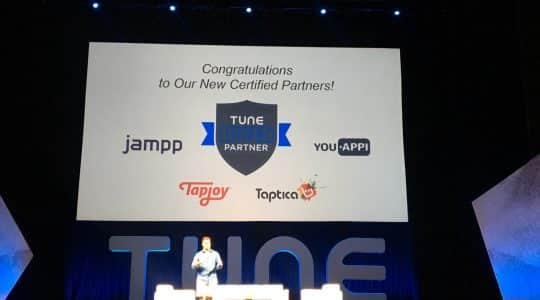
In early 2013, Twitter introduced Twitter Cards as a way for marketers to display media-rich information directly within a tweet that appears in users’ timelines on Twitter. These cards can include product information; links to apps that can be launched on both mobile devices and the desktop; pictures; and the ability to deeplink within mobile apps. With these cards, mobile app marketers can not only leverage the social network to acquire users with traditional links or with the app cards, but also drive users to specific points within apps that Twitter users already have using deep linking. For example, if a user shares a link to a picture pinned on Pinterest, users can click on the link to open up and view the pinned photo inside of the Pinterest app on their mobile device. If the user doesn’t have Pinterest, Twitter will instead open up Pinterest inside of the app store and encourage the user to download the app.
Until recently, the problem with Twitter cards was that it required mobile app developers to have a web presence with meta data to support the Twitter card. This meant that many developers were not able to take advantage of Twitter cards to drive re-engagement and app retention, as many developers didn’t have web pages that contained the meta data needed to create Twitter cards (such as the logo, app URI, and summary.) To solve this problem, Deeplink.me rolled out support for Twitter cards in November by providing hosting support for all the metadata and markup that developers need to leverage Twitter cards.
I had a chance to sit down and talk with Noah Klausman from Deeplink.me about why they launched this new feature and why developers should be using Twitter cards to deep link into their mobile apps. As Noah says, “Previously with Twitter cards, someone could post a deeplink and it wasn’t a clean experience. It would open a browser in the Twitter app and then the app would open. While it worked, but it wasn’t a clean flow. With our functionality, you’re in the tweet, then click the ‘open app’ button and it fires the app and goes to the right page.”
For mobile app marketers, Noah explains that using deeplinking is knowing “… all about where users are in the funnel. The idea is to capture users’ intents, pull them into the funnel and drive them right to where they can make a purchase. Gaming is one vertical where marketers have most gravitated towards this feature. They can drive people to the game using any other kind of marketing — but with deeplinking they can drive them directly to the screen where they need more lives to continue with the game, which offers a cleaner and higher converting experience.”
This is essentially why mobile app marketers should consider using deeplinking on Twitter; not just for its ability to drive user acquisition (although it can do this very well) but for user retention and re-engagement.
As Noah says, “Previously we’ve been in this weird nebulous space where everything has revolved around user acquisition. The way I say this internally to our team is that measuring only installs is equivalent to Coca Cola measuring how many people saw their soda machines. It’s much more relevant when it’s combined with engagement and retention. Mobile app marketers should continuously want to figure out what users are interested in and drive them back to that point in the app. We’re moving toward a retention focused industry. Understanding what users are doing in your app and providing a path to an event so that the end user doesn’t have to connect the dots will lead to a higher lifetime value of each user.”
By taking advantage of deeplinking on Twitter, mobile app developers can drive not just user acquisition, but more importantly user retention and re-engagement.
Author
Becky is the Senior Content Marketing Manager at TUNE. Before TUNE, she led a variety of marketing and communications projects at San Francisco startups. Becky received her bachelor's degree in English from Wake Forest University. After living nearly a decade in San Francisco and Seattle, she has returned to her home of Charleston, SC, where you can find her enjoying the sun and salt water with her family.




Leave a Reply
You must be logged in to post a comment.